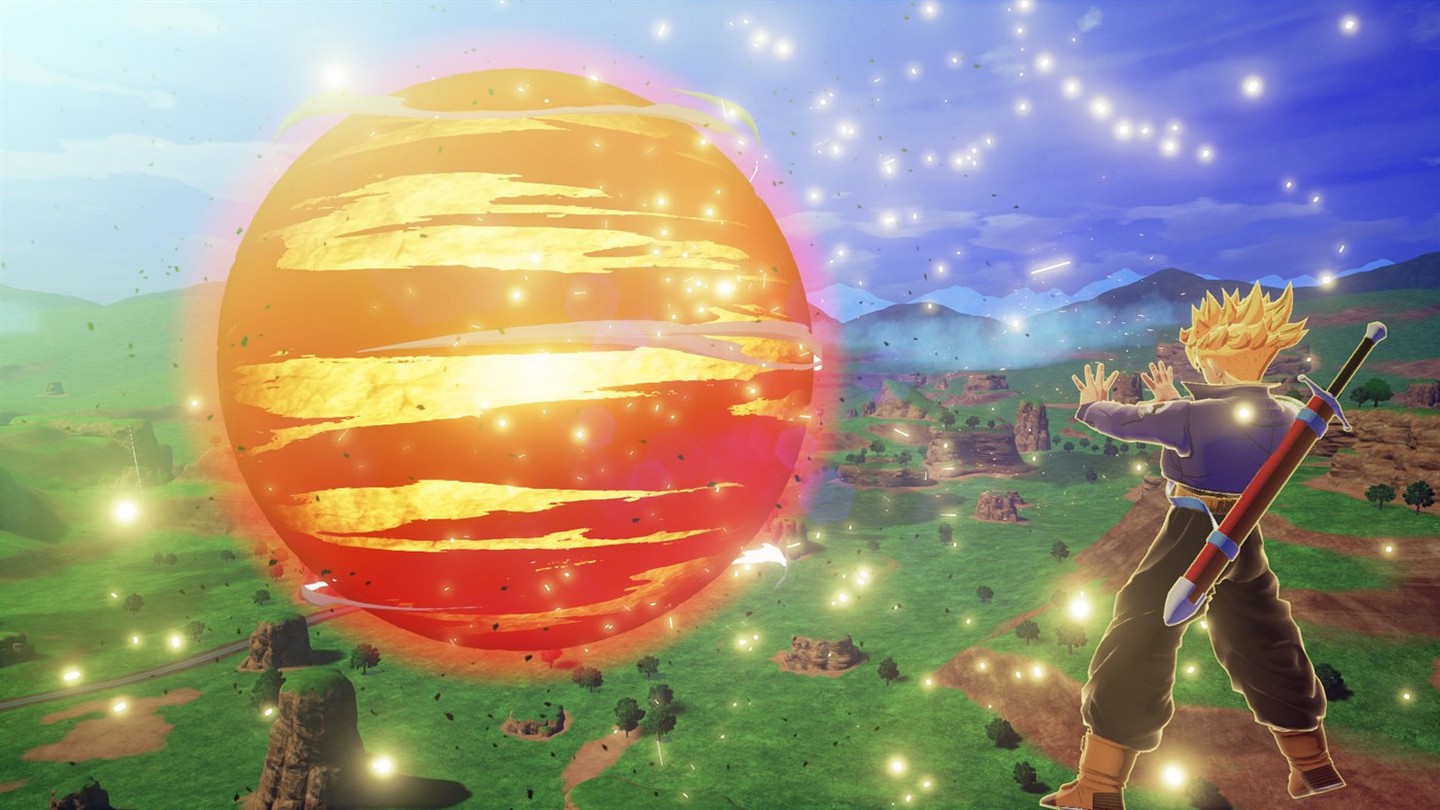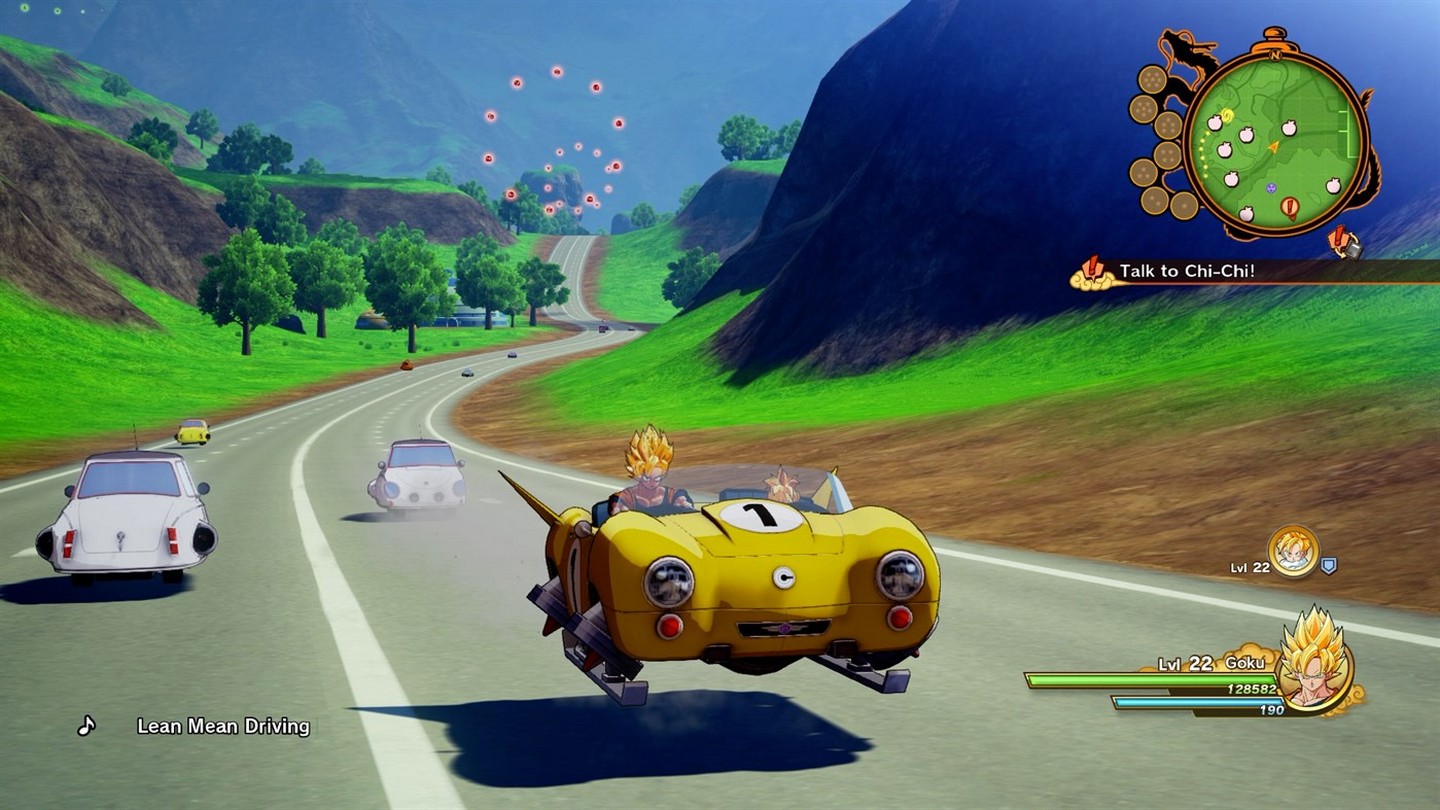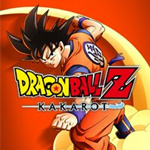KAMEHAMEHUH?
I will save any potential reader a ton of time and just say that Dragon Ball Z: Kakarot is only for fans of Dragon Ball Z. Whether it be hardcore fans or people like me who grew up watching the series, this game is not going to convince anyone who doesn’t already have some fondness for the absurdity that is Dragon Ball Z to become a fan.
Kakarot is a full retelling of the original Dragon Ball Z series, from the beginning to the Buu Saga, with some reduction of bloat as well as some expanding on character backgrounds. Presented as an RPG fighting game, Kakarot is more of a fighting game with the baggage of an RPG. It is by no means bad, but I found myself wondering why certain decisions were made.

PLATFORMS: PS4, XB1, PC
MSRP: $59.99
PRICE I’D PAY: $39.99
The combat portions are definitely the meat of the game. Combat is fast and fun and takes place in a 3D environment. Special moves are done by holding a shoulder button and then selecting one of four equipped attacks mapped to the face buttons. Items can be used to heal and to cause different effects. By holding a trigger the game locks motion to vertical and horizontal movement as if to strafe around the enemy in a 3D space. Pressing up on the analog stick would normally move my character towards the enemy, but with the trigger held up meant I was moving upwards above the enemy. Dodging and attacking feels fantastic, and it should for a game based on a series that centered on fighting. Overall, this is where I enjoyed Kakarot the most. Fighting the battles I watched on TV over 20 years ago felt way better than I would’ve expected.
Now for my real issue: the RPG parts of this game are undercooked. I’m going to use that last sentence to segue into the cooking elements. Raw ingredients can be eaten as is or can be cooked into dishes for better bonuses, while those dishes can then be made into full course meals but only when visiting Chi-Chi. Some give temporary bonuses while others provide permanent ones, and while that’s great, I rarely found myself having to engage with the mechanic. If I don’t have to engage with cooking there’s little reason to engage with the gathering of materials which means I didn’t find it necessary to fish (its own minigame) or hunt (simply pressing a button when near animals or fighting dinosaurs).
Exploring the world is neat because I can fly and run around large open areas from Dragon Ball Z and sometimes take on side quests, but I wish there were more side quests or rather more interesting side quests. At times it feels like the world is very big and yet there isn’t a lot to do in it. Random battles happen but the enemies are nowhere near as interesting to fight as the bosses. The main focus of the open world is to collect orbs that are used to level up moves, but moves are rarely unlocked with experience but rather story beats (which is staying true to the original series) which meant I stockpiled orbs to the point where I had more orbs than I can spend, which means flying around isn’t even required of me anymore because there’s nothing to do in the world until I hit that next story beat.
The best and most interesting thing this game does on the RPG side of things is the Community Board. Throughout, playable characters, support characters, and NPCs will hand over their Soul Emblem. Each Soul Emblem has a list of stats that shows what bonus they will give to each Community Board. Some characters will give a bigger bonus to the Z Warrior Community while contributing very little to the Adult Community. Each Community Board provides bonuses to the player. It sounds very basic but using items on Soul Emblems can increase friendship level (which provides rewards at certain levels) as well as stats so a character who was formerly not a contributor when placed in the Cooking Community now provides a bigger bonusthan they once did.

The most intriguing part is that each board has a different layout with a designated amount of slots, and placing Soul Emblems in certain configurations provide special link bonuses. Goku and Gohan for example have a link bonus based on being father and son, while Piccolo and Gohan also have their own link bonus because Piccolo trained Gohan. This means placing Gohan in a spot where both Goku and Piccolo’s Soul Emblem connects will provide even more of a bonus. It’s an interesting concept that I hope I see in a more involved RPG, but I don’t know if it would work without such a beloved lore powering it.
I think Kakarot is a better game than I may have implied in this review. I like the combat being as simple as it is because it never felt as if the mechanics was what made fights difficult; it was the enemy and the crazy flashy moves they would do that would up the difficulty. I liked the fact that I got to play as different characters as well, which was odd to hear others complain about. The Community Board is still one of the most compelling ways to include the larger cast of Dragon Ball Z in the adventure. My only gripe is that for how much this game wants to be seen like an RPG it never really does anything of interest with it. If the world is going to be big, fill it with quests. Fill it with more side activities. Even if the main focus is combat, give me a reason to explore the world more than just Dragon Ball flashbacks and collectibles I am required to have to upgrade skills. I think the Yakuza games and more importantly the Fist of the North Star game from the Yakuza team shows that the game can still have heavy emphasis on combat and still be a role playing game. Kakarot unfortunately just doesn’t hit that mark.
Review copy of game provided by publisher.
